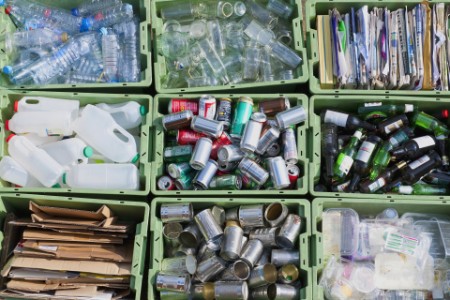
The better the question
How do you inject fresh thinking into the business of waste management?
The challenge was how to harness IoT technology and transform the business by unlocking masses of data insights.
In 2013, SUEZ — a leading waste management and water treatment services company — faced major disruption to its operating and revenue model in Warsaw. The city imposed a new waste management tax on its residents, and more stringent EU regulations on digital reporting for businesses were on the horizon, too. SUEZ was quick to recognize an opportunity for a leading supplier to contract with the city for all waste collection services.
SUEZ was keen to seize this opportunity, but leaders would need to inject some fresh thinking into the way they do business. It teamed with EY to harness the leading applications of IoT technology and transformed the business by unlocking masses of data insights.
Moving from labor-intensive to real-time data
Before redesigning its operations model, SUEZ had a simple approach to collecting customers’ waste. At the start of each shift, collecting agents were given a print-out of a system-generated route to follow. At the end of each shift, agents would return to base and manually enter data into SUEZ’s IT system, confirming the route they had taken and the locations they had stopped at to collect waste.
This was a time-consuming and labor-intensive task for workers. It also prevented SUEZ from having access to real-time data that would enable it to deploy resources where they were needed. Key to winning and retaining the waste collection contract with the city would be SUEZ’s ability to calculate and record the weight of each bin collected — data it would later have to share with the city in near real time via a secured network from SUEZ’s command center. At the command center, we provided a governance framework that would help ensure the security of the information being communicated between the two parties.

The better the answer
Putting IoT at the heart of digital transformation
The new technology is enhancing service levels and, in turn, reducing customer complaints.
EY leveraged its sector knowledge in creating smart cities by devising a plan that put IoT at the heart of SUEZ’s digital transformation journey. We facilitated workshops with SUEZ, bringing the leading talent, creativity and experience of each organization together to work through the business challenges that SUEZ faced. EY helped SUEZ to change its operating model and proposed several measures, including investment in a newly created command center for all of its waste management operations — connecting waste bins, containers and trucks.
Upgrading the network of bins and the fleet of trucks with the latest IoT technology created immediate efficiencies. Collecting agents no longer need to manually enter data into the IT system, and every connected truck was now fully monitored by the command center, which provided the optimal route for each driver in real time.
Radio frequency identification (RFID) tags on each bin could now provide the exact weight and location of each unit, helping SUEZ to eventually predict trends in waste collection including busy and quiet periods, meaning resources could be deployed more effectively. The operational efficiencies were soon realized as routes were enhanced to increase service levels, reduce customer complaints and avoid contractual penalties.

The better the world works
Achieving measurable benefits
SUEZ is currently on the leading edge of digital transformation using IoT technology.
SUEZ has more than 80,000 employees who generated more than EUR15.3b of revenue in 2016, split between waste and water operations. Since SUEZ launched its digital transformation program by implementing the IoT solution for Warsaw, there have been three notable benefits:
- Increased efficiency — as the command center became more data rich with the real-time information from each truck, SUEZ was able to optimize the fleet, which meant reducing the fleet from 45 to 40 trucks. The surplus trucks could then be deployed to cities outside of Warsaw, providing another revenue source for SUEZ.
- Increased profitability — the IoT solution could now help provide assurances to the command center that all routes had been completed in full. This significantly reduced the number of claims from customers for refunds for missed stops by trucks — something that was previously very difficult to refute. As of December 2016, SUEZ had achieved a 60% reduction in the number of claims upheld by the command center.
- Improved management of operational risk — EY helped to evolve the role of the SUEZ IT department. It was no longer seen as a back-end support function but was now positioned front and center as a critical business partner. To manage the increased operational risk, the interface between IT and the operational side of the business was completely redesigned with EY’s help. This included robust cyber-physical security processes and procedures for the IoT devices to help ensure business continuity.

